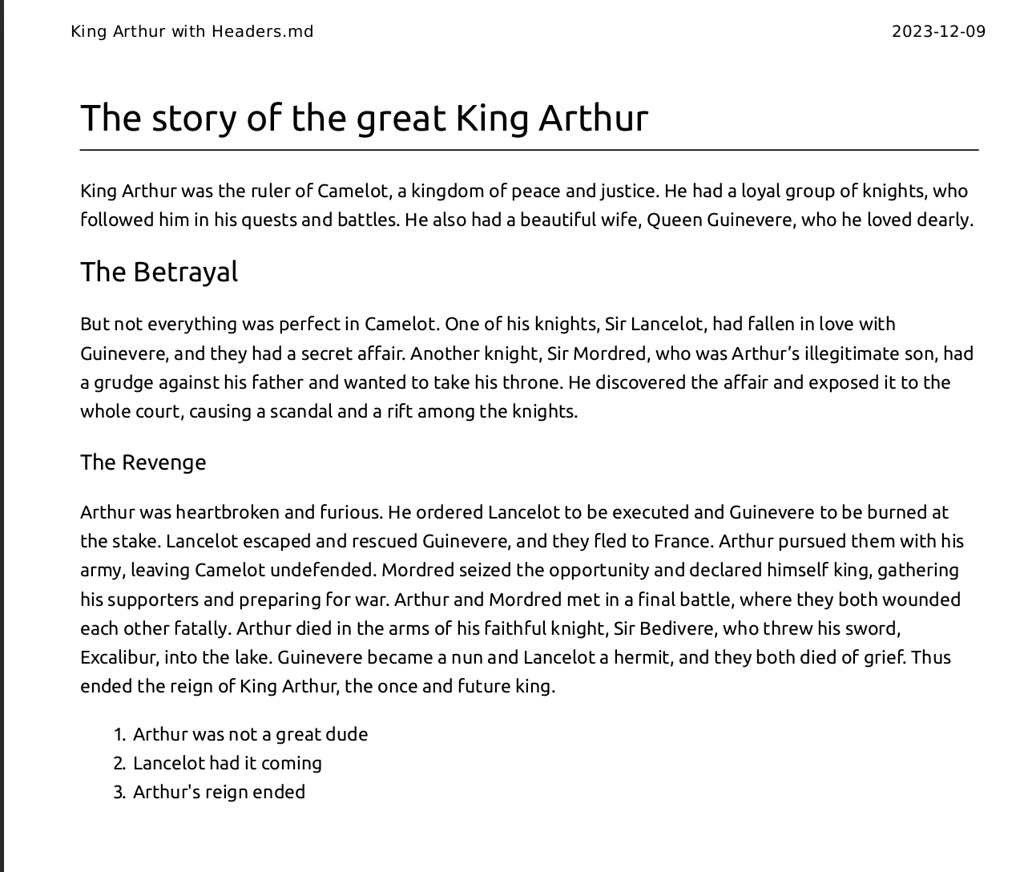Simplifying Text with Markdown
Discovering the power of a simplified format
by Carl James | BLOOMINGTON, IN | Dec. 9, 2023

There are a lot of various programs and file formats in order to write and store words. I have used a slew of word processing and document editors over the years producing various documents in a lot of different formats. I was a WordPerfect user back the 1990s, I used Final Draft to write screenplays in the 2000s, MS Word to write my school papers at Western Governors University in 2013 and this past year.
I am a fan of hypertext markup language (HTML). As I have mentioned before in this blog, my first two websites back the 1990s were entirely raw HTML that I edited directly in MS Notepad. For coding I have also used Notepad++, Python's IDLE, PyCharm, and most recently Microsoft's VS Code which is my preferred code editor today.
A few years ago I was introduced to Markdown as a way to type documents. It fulfills a sweet spot between HTML and a WSYWIG editor like MS Word. I like seeing the raw file. MS Word has information in the file I can't see. At the same time when I am typing something, I really don't like seeing every paragraph start and end with tags. That just clutters up the editing view when I am mostly trying to produce words and not code.
The greatest aspect of Markdown syntax is the paragraph. While HTML requires am open and closing tag for each paragraph, Markdown just has you type the paragraph and then separate the next paragraph with a new line. For example, I am keying this blog directly into a basic text form on the admin backend of this webapp. I haven't yet type anything other than text.
Now I could easily add ordered list:
- First Thing
- Second Thing
- Third thing
There are a lot of other things I could do as well such as adding images

The code for that is relatively straight forward which you can see with a guide to Markdown Syntax. There is not a lot of control in how it is displayed, but that is the sacrifice for getting the simplicity.
Up until today, in order to avoid including a content management package on my blog, I keyed my entries in raw HTML. Today I took a few hours and updated my Django app to store my blogs in Markdown and then use the Python Markdown package to send those pages to the HTML templates as HTML. It was even easier than I imagined.
It is so much nicer not having to type out the HTML tags and even linking other websites is remarkably straight forward. I have not limited my use of markdown to only writing blogs. I have even used it at my workplace where I have full access to Microsoft 365 for project planning documents. This allows me to use VS Code to edit these and know what I am getting without a lot of extra fluff I don't want.
VS Code is free software that works on Microsoft Windows, Linux, and MacOS. I am writing this on a computer in Ubuntu. While markdown can be written in a program as simple as Windows Notepad, VS Code permits a side-by-side view so you can see the raw markdown and the final rendered result.
VS Code Markdown with preview:

VS Code even has an extension that will save the result of the Markdown as a portable document file so it is easily shareable with others.
King Arthur AI story as a PDF:

Personal computers have so many tools available today. I'm not saying Markdown is the correct tool for you. Yes. Those of us who write code tend to appreciate formats like markdown. That being said, if you take the time to dive in, even if you are not a coder, you might find the efficiency and simplicity of the markdown format to your liking.

Categories || All || Coding
See a complete list of all jovian34 blogs
As always, I'd love to hear you're thoughts and questions, so feel free to shoot a Noot to @jovian34 on Mastodon and I will gladly respond and perhaps write a blog post on a topic you suggest.

